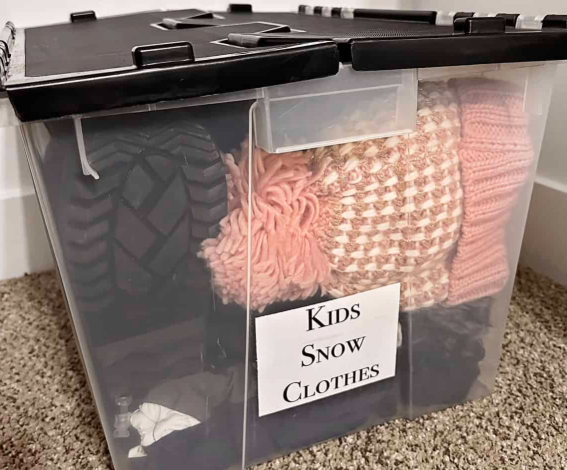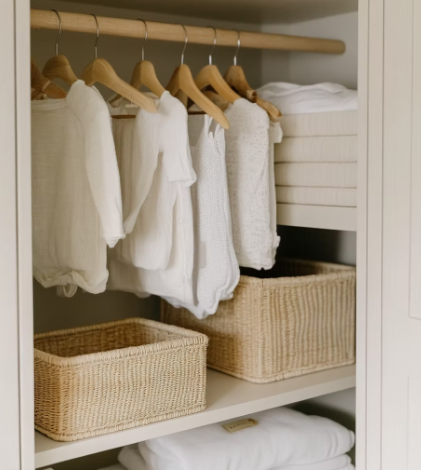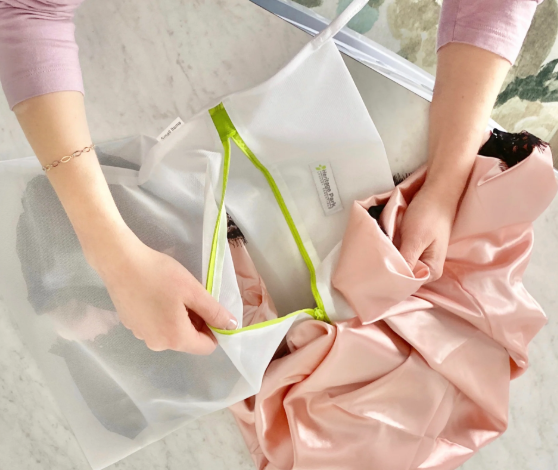
The Truth About Storing Clothes in Plastic Containers: What You Need to Know
Plastic storage bins are often seen as a convenient and affordable way to store clothing, but many people have concerns about their long-term safety. From off-gassing chemicals to potential mold risks, it’s important to understand the pros and cons of using plastic containers for storing clothes. This guide will provide you with the facts and alternatives, helping you make an informed decision about how to store your clothes while keeping them in the best condition possible.
Understanding Plastic Storage Containers
Not all plastic bins are created equal, especially when it comes to durability and safety. The type of plastic used can impact both the protection it provides and any potential health risks.
- Polycarbonate and Polystyrene: These rigid, clear plastics can release harmful chemicals such as bisphenols, which may affect hormone levels. These plastics are not suitable for storing clothes, especially if the bins are cracked.
- Polypropylene (PP#5): This is a more durable plastic that’s free of harmful chemicals like BPA and phthalates. It’s resistant to higher temperatures and is often used for food storage. It’s a better choice for long-term garment storage.
- Polyethylene (PE#2 and PE#4): While these plastics are still free from BPA and phthalates, they are more malleable and prone to absorbing odors. They are generally not ideal for clothing storage over long periods.
- Avoid Plastics like PETE#1 and PVC#3: These materials can release harmful substances like antimony and phthalates over time, especially when exposed to temperature changes or sunlight.
For safer storage, look for high-density polyethylene (HDPE#2) or polypropylene (PP#5) containers, which are more resistant to wear, cracking, and chemical off-gassing.
The Dangers of Plastic Off-Gassing
One concern with plastic storage containers is that they can release volatile chemicals into the air—a process known as off-gassing. Plastics such as polycarbonate and polystyrene may release phthalates, which are used to make the plastic more flexible. These chemicals can accumulate in indoor air and dust, leading to potential health risks:
- Respiratory issues, especially for those with asthma or sensitivity to air pollutants
- Hormonal disruptions that may affect fertility, weight management, and metabolic health
- Developmental issues for babies and children exposed during critical periods
- Increased risks of heart disease and cancer over prolonged exposure
Although more research is needed, it’s wise to minimize the risks associated with off-gassing by choosing thicker, less pliable plastic bins, like those made from polypropylene or polyethylene. Also, always wash new bins thoroughly before use to reduce any chemical residue left from the manufacturing process.
Mold Risks in Plastic Containers
Plastic bins can also trap moisture, creating the perfect environment for mold to grow. When clothes are sealed inside plastic containers without ventilation, humidity can build up, leading to fabric decay. To prevent mold:
- Always dry clothes thoroughly before placing them in storage. Never store damp or wet garments, as this can lead to trapped moisture and mold growth.
- Consider using breathable storage options like cotton bags or fabric bins for more delicate or seasonal items.
- If you must use plastic bins, make sure to include moisture absorbers, such as silica gel packets, to keep humidity levels in check.
- For long-term storage, archival-quality acid-free boxes with vented sides are ideal for preserving delicate fabrics, such as vintage or heirloom garments, without the risk of mold.
The Risk of Static Electricity
Another issue with plastic containers is the accumulation of static electricity. Over time, as clothes are moved in and out of plastic bins, friction causes static to build up. This can lead to a few problems:
- Damage to delicate fabrics: Static sparks can cause irreversible damage to fragile materials, such as vintage lace or garments with delicate embellishments. Even simple actions, like moving clothes in and out of bins, can cause microburns on the fibers, which weaken the fabric over time.
- Static cling: Clothes stored in plastic containers may attract dust, pet hair, and other debris, which can accumulate on the fabric. This debris can damage the fabric and cause it to lose its vibrancy and texture.
To reduce static buildup, avoid dragging clothes across the bottom of the bins. Instead, carefully lift them by the edges or hangers. For more sensitive fabrics, consider using natural storage alternatives that are less prone to static buildup, such as cotton bags or fabric bins.
Safe Alternatives to Plastic Storage
If you’re concerned about the potential risks of storing clothes in plastic containers, there are several safer alternatives that protect your garments without the downsides of plastic:
- Cedar Chests or Cedar-Lined Closets: Cedar naturally repels moths and provides an excellent way to keep clothes safe from pests while allowing proper airflow. These wooden storage options also prevent moisture buildup and are ideal for storing wool, silk, and other delicate fabrics.
- Muslin Cotton Storage Bags: These breathable, unbleached cotton bags are a great way to protect clothing from dust, dirt, and overhandling. They allow the fabric to breathe, preventing moisture accumulation and static buildup.
- Acid-Free Cardboard Boxes: For valuable or heirloom garments, conservation-grade cardboard boxes are ideal. These boxes are designed to protect clothing from crushing, creasing, and fading, offering superior long-term protection for delicate fabrics.
- Window Screen Fabric Bags: A surprisingly effective option for storing clothes, these mesh bags provide ventilation while keeping pests out. The sturdy synthetic material is durable and perfect for preventing any unwanted damage.
Best Practices for Storing Clothes in Plastic Containers
If you decide that plastic bins are your best option, here are some best practices to reduce the risks associated with them:
- Choose High-Quality Plastic: Opt for thicker, BPA-free bins made from polypropylene (PP) or high-density polyethylene (HDPE) to minimize chemical off-gassing and static buildup.
- Wash Before Use: Always clean new plastic bins with hot water before using them to remove any manufacturing residue.
- Use Cedar or Lavender: Add natural moth repellents like cedar blocks or lavender sachets to your bins to keep pests at bay.
- Store Bins in Well-Ventilated Areas: Avoid stacking bins tightly in confined spaces. Store them on shelves with space for airflow to prevent mold and mildew from developing.
- Minimize Handling: Instead of dragging clothes out of plastic containers, lift them gently by the sides to avoid friction that causes static.
Conclusion: Making the Best Choice for Clothing Storage
When it comes to long-term clothing storage, there is no one-size-fits-all solution. While plastic containers are affordable and convenient, they come with risks such as off-gassing, mold buildup, and static electricity. By following best practices and considering safer alternatives like cedar chests, muslin bags, and acid-free boxes, you can ensure your clothes remain in great condition for years to come.






